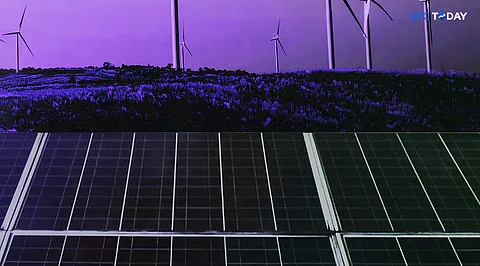

The green energy momentum is still stronger in 2025. Spurred by climate urgency, policy support, and technology advancements, the sector is experiencing accelerating investor appetite. Clean power stocks have soared higher over the last few months, raising concerns about sustainability and valuation. Although some think valuations are overheated, others regard the rally as still in its formative stages, supported by secular global movement towards decarbonization.
The transition away from fossil fuels to renewables has accelerated. Solar, wind, hydrogen, and battery storage technologies are no longer emerging concepts. They have emerged as the foundation of national energy policies of large economies. Investment in renewable infrastructure worldwide has broken previous records. India, the United States, and the European Union continue to lead green transformations competitively by setting aggressive emission reduction targets. This optimism is also seen in the stock markets, where clean energy stocks have posted double-digit returns.
There are a variety of factors driving the boom. One is climate policy finally being translated into real expenditure on infrastructure. The United States Inflation Reduction Act and India's Green Hydrogen Mission are merely two examples of money pouring into clean tech. Two, the imperative to diversify out of oil and gas has gained new prominence as an international energy security concern. Three, demand for ESG-compliant portfolios by investors has rendered equities in clean energy more desirable.
Technological innovations have also played a significant role. The cost of solar panels and windmills has reduced significantly. Storage solutions have also developed on scale and efficiency grounds. As a result, green projects are now commercially viable without the help of huge subsidies.
The concern regarding overvaluation arises from sharp price appreciation in a brief timeframe. Several mid-cap and large-cap clean energy stocks have doubled or even trebled since the beginning of 2024. Price-to-earnings and price-to-sales multiples have crossed historical levels. Analysts believe that although certain individual stocks have gotten ahead of fundamentals, the sector as a whole is undergoing a structural re-rating.
Valuation should be conceived in terms of longer-term earnings capacity. Companies with rich pipeline projects, stable revenue visibility, and scalable franchises can sustain their current premiums. Speculative companies with thin track records of execution, on the other hand, are at risk of being corrected if expectations are disappointed.
Green energy is not monolithic. Several sub-sectors are powering its growth. Solar continues to lead the way, both in installations and share price performance. India and China have aggressively accelerated utility-scale projects, but domestic adoption is also on the rise. Wind power, particularly offshore wind, is beginning to take off in Europe and some regions of Asia.
Hydrogen is a growingly feasible alternative for industrial and transport applications. Battery storage and grid tech is attracting capital because it stabilizes renewable supply. Electric vehicle (EV) charging infrastructure is a second sector seeing momentum and further concurring energy and mobility lines.
India's Tata Power Renewable Energy and Adani Green Energy continue to ride policy tailwinds along with execution strengths. NTPC Green Energy is expanding solar as well as green hydrogen operations. Globally, firms like Enphase Energy as well as NextEra Energy have maintained leadership by the combination of consistent delivery with technology advancement.
New-generation players in the battery storage and hydrogen industry are also in the spotlight. Their valuations remain high, signaling investor faith in potential disruption in the future. Nevertheless, diversified players with legacy anchors are better bets during market uncertainty.
Policy support is another important pillar. In India, the government aims to increase non-fossil fuel capacity to 500 GW by 2030. Financial incentive in the form of viability gap funding for battery production and production-linked incentives for solar manufacturing enhances industry economics.
Globally, ESG compliance is becoming the only choice for institutional capital. Sustainability funds now handle significant inflows. Structural trend ensures that green energy stocks remain favored in every cycle of the market. Regulatory frameworks are evolving to guarantee the minimum amount of greenwashing and greater transparency.
Despite near-term volatility, the green energy story remains robust. The industry is still in a growth phase with significant capex expected over the next decade. As climate regulations tighten, companies that align with net-zero goals are better positioned to attract capital.
The valuation gap between green energy and traditional utilities is declining. The majority of green energy firms are shifting away from project-based revenues to steady annuity income streams. This transition will cause more stability and will attract conservative investors.
New technologies like floating solar, energy blockchain, and AI-controlled grid will probably transform the production and consumption of energy. Long-term investors who practice selectivity in stock picking are able to gain both capital appreciation and exposure to themes.
There remain risks through overcapacity, policy lags, raw material shortages, and global economic uncertainty. Lithium and rare earth supplies can influence EV and battery supply chains. Relying on subsidies can boomerang when government priorities change.
Investor sentiment is also at the mercy of macroeconomic cycles. Higher interest rates or inflation can put pressure on capital-intensive industries. Currency fluctuations and trade restrictions are also risks to supply chains.
Assessing financial prudence, execution skills, and innovation pipeline is crucial. Momentum investing blindly in the clean energy theme can leave portfolios vulnerable to downside risk in the event that growth stories fail to materialize.
The clean energy boom is driven by underlying long-term drivers. While the current rally may raise valuation issues, structural drivers of demand remain in existence. Clean energy is not a faddish alternative sector anymore—it is the future of global infrastructure. Investors need to separate hype and value and focus on businesses with proven business models and scalable innovation. With global momentum for sustainability, clean power stocks look more like a beginning than a bubble.